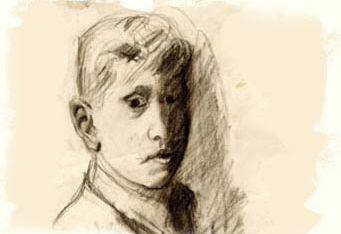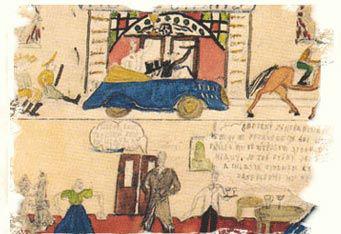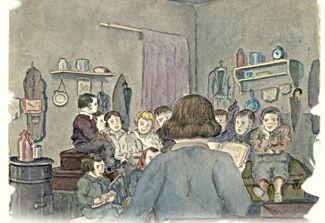We invite you to join us on a journey to discover the world of the Jewish children of the Theresienstadt ghetto. This journey strives to reveal the difficulties of these children as they suffered times of pain and loss during the Holocaust. The site has a lesson plan with activities geared for pupils in middle and high school.
This activity focuses on the lives and world of the children in the Theresienstadt Ghetto and follows their relationships with different groups in the ghetto.
During the Holocaust, the Jews of Czechoslovakia as well as elderly Jews and well-known Jewish personalities people from Germany and Western Europe were imprisoned in the Theresienstadt Ghetto. Later, in 1944, the Germans also used this ghetto as a site for camouflaging the murder of the Jews of Europe by presenting it as "a model Jewish town" with "an autonomous Jewish administration".
In 1944, the Germans presented the ghetto to an investigating committee of the International Red Cross. Prior to the arrival of the delegation, many Jews were deported to Auschwitz, in order to make the ghetto appear less crowded than it actually was. Fake stores, cafes, kindergartens, and a bank were opened, and little gardens and flowers were planted throughout the ghetto. The visit was meticulously planned in advance, particularly the censored meetings of Jewish prisoners with Red Cross representatives. After the visit, a propaganda movie was made about the life of the Jews in the ghetto under the auspices of the Third Reich. At the end of the filming, most of the "actors" were sent to the gas chambers in Auschwitz. This illusion, crafted so carefully by the Germans during the war, has also carried over since the war.
Theresienstadt is sometimes - and mistakenly - thought to be a "model" ghetto in which life was, overall, better (than in other ghettos). It is important to understand that death was constantly present in the Theresienstadt Ghetto. Most of the elderly people who were brought there died in the ghetto from the inhumane conditions, and it served mainly as a transit station en route to the death camps. On May 9, 1945, the Red Army liberated Theresienstadt. At the time of liberation there were about 30,000 Jews in Theresienstadt. The majority of them were former concentration camp prisoners that were brought to Theresienstadt on the infamous death marches. Altogether, 155,650 Jews were deported to Theresienstadt. 34,000 of them died there. 87,000 of them were sent to camps in Poland, where the vast majority were murdered by the Germans. Only some 3,000 of the Jews from Theresienstadt survived the camps.









